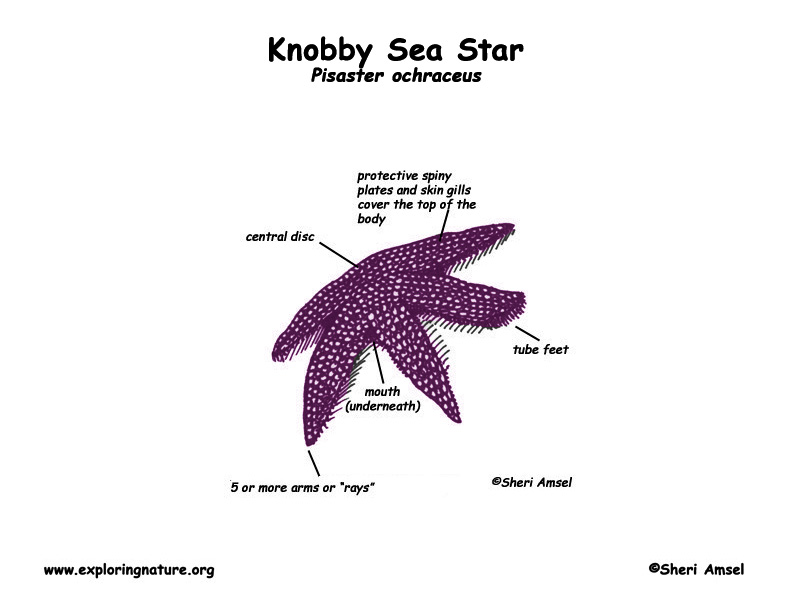

They are found on the Pacific coast of North America, from Alaska to Mexico.
They live up on rocky shores, in tidal pools and into deeper water.
They reach up to 18 inches wide (45 cm). They can be yellow, orange, brown, reddish or purple. They are a heavy starfish with a large middle disk and five big arms radiating out. They have short white spines on top and tube feet on bottom. Their mouth is located underneath.
If they lose an arm to a predator, they can grow it back.
They are predators and eat many mussels and barnacles. They keep the mussel population down, which makes them a 'keystone species' in the tidal pool. The starfish’s tube feet use strong suction to pull the muscles’ shell apart. They can pull nonstop for hours until their prey gets tired. Once they open their prey’s shell, even a bit, they extend their stomach out into the prey and digest it. It takes more than six hours to eat one bivalve like a mussel.
Males and females release their sperm and eggs into the water where fertilization occurs.
Domain: Eukarya
Kingdom: Animalia
Phylum: Echinodermata
Class: Asteroidea
Order: Forcipulatida
Family: Asteriidae
Genus: Pisaster
Species: P. ochraceus
When you research information you must cite the reference. Citing for websites is different from citing from books, magazines and periodicals. The style of citing shown here is from the MLA Style Citations (Modern Language Association).
When citing a WEBSITE the general format is as follows.
Author Last Name, First Name(s). "Title: Subtitle of Part of Web Page, if appropriate." Title: Subtitle: Section of Page if appropriate. Sponsoring/Publishing Agency, If Given. Additional significant descriptive information. Date of Electronic Publication or other Date, such as Last Updated. Day Month Year of access < URL >.
Amsel, Sheri. "Sea Star (Knobby)" Exploring Nature Educational Resource ©2005-2024. December 13, 2024
< http://mail.exploringnature.org/db/view/557 >

